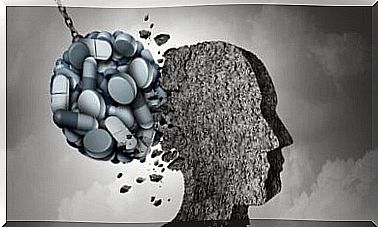Premenstrual Syndrome: Causes, Symptoms And Treatment

PMS is the storm before the storm. In many cases, the weeks before menstruation are accompanied by a series of very annoying physical and psychological symptoms. Moreover, it is known that 20% of women see their lives very limited, hence the need for an adequate diagnosis and a multidisciplinary approach with which to improve the day-to-day life of patients.
Every time people talk about premenstrual syndrome, it is very common to focus on only one aspect: on the mood swings of women. Often, the gaze is placed on the superficial without noticing the complex mechanisms that orchestrate the menstrual cycle. It is and fluctuates week by week, serotonin levels fall, and other hormones come into action capable of promoting fluid retention, abdominal pain, headaches …
This relentless dance of neurotransmitters and hormones drags every woman of childbearing age to a series of symptoms that can range from a mere discomfort in the breasts or some fatigue, to that extreme where one is immobilized by cramps, dizziness, vomiting and that pain with capital letters where ibuprofen is not enough.
It is not surprising that countries like Japan grant women three days of sick leave for period or premenstrual syndrome. It is about the seirikyuuka , a leave that every worker can take if she needs it without losing her salary. Other countries, of course, do not conceive this type of initiative, but if there is something that remains on the table, it is an obvious reality: both the period itself and the weeks prior to it have a series of very exhausting symptoms.

What is and why does PMS occur?
We pointed out before: not all women come to live the premenstrual and menstrual stages with special discomfort. However, it is known that more than 80% of the female population experiences some type of symptomatology, and 8% may suffer what is known as premenstrual dysphoric disorder. This last condition has a series of physical and psychological characteristics so limiting that it is almost impossible to lead a normal life.
Premenstrual syndrome alterations have to do with the luteal phase of the menstrual cycle. When the unfertilized ovum disintegrates to be expelled later in menstruation, it begins to release
As if this were not enough, serotonin levels also fall in this period prior to menstruation. Thus, the feeling of discouragement, tiredness, discomfort or even anger are undoubtedly part of that emotional tissue so common in premenstrual syndrome.
The 4 characteristics of premenstrual syndrome
On average, it is established that the premenstrual syndrome is characterized by 4 alterations, by 4 dimensions where a series of very specific symptoms is integrated that each woman can suffer to a greater or lesser degree. Let’s see it in detail.
PMS-A (premenstrual syndrome with anxiety)
Low levels of serotonin can cause a feeling of stress, anxiety, nervousness, bad mood, constant overwhelm, excessive worry … It is a period that can last between 3 and 10 days where the woman notices a mental over-activation as exhausting as it is annoying.
PMS-D (premenstrual syndrome with physical pain)
In this second symptomatology all those physical characteristics that occur in those two weeks prior to menstruation are integrated. Not all women suffer the same discomfort, but on average they are the most recurrent:
- Headache
- Breakouts
- Abdominal pain.
- Cramps
- Pain in the back side of the back.
- Breast swelling and tenderness.
- Joint pain.
- Episodes of diarrhea or constipation.
PMS- AN (premenstrual syndrome and sweet tooth or other cravings)
PMS often leads to a craving for sweets, chocolate, and all foods rich in sugar. That this is so is due to hormones. An increase in estrogen and a decrease in serotonin leads to a lower level of glucose. Our brain, therefore, pushes us to have a very specific desire for sweet foods.

PMS-T (Premenstrual syndrome with sadness or depression)
Fluctuations in estrogen and progesterone are associated with sleep problems, discouragement, tiredness, hot flashes, and worst of all, a very high level of depression that feels almost like true depression.
How to reduce the symptoms associated with premenstrual syndrome?
Most women turn to non-steroidal anti-inflammatory drugs (NSAIDs) such as ibuprofen to reduce symptoms associated with both menstruation and PMS. However, it is always a good time to try other approaches that are as or much more effective. They are as follows:
- Calcium and vitamin D notably improve the symptoms of premenstrual syndrome (we can take vitamin supplements or increase the consumption of fish such as salmon, cereals, orange juice, enriched milk …)
- Magnesium, vitamin E, and vitamin B6 are also very effective, especially in reducing pain, as well as swelling or fluid retention.
- Natural plants like sage or roots like ginger are also very suitable.
- We must reduce the consumption of foods rich in salt, refined flours, saturated fats, as well as coffee or alcohol.
- Moderate exercise is also very helpful.
- Yoga or relaxation exercises work very well.

To conclude, it should be noted that in case the symptoms are very painful and prevent us from leading a normal life, it is advisable to talk to the doctors. In these cases, treatments with birth control pills or even antidepressants are common and equally effective approaches.
However, let us not hesitate to complement them with the advice mentioned above. The multidisciplinary approach, where the natural and the psychological are added to the pharmacological approaches, will undoubtedly offer us a very positive response to this type of condition.









